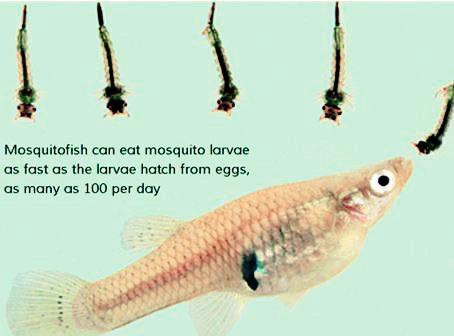
Gambusia fish

23.11.2023
Gambusia fish , Daily Current Affairs , RACE IAS : Best IAS Coaching in Lucknow
|
For Prelims: About the Gambusia Fish, Important points , Key facts about the Malaria (Transmission ,Symptoms,Vaccine) |
Why in the news?
Recently, various government and non-government organizations in Andhra Pradesh, Odisha and Punjab have released Gambusia fish in local water bodies to overcome the mosquito problem.
Important points:
- This fish prevents the increase in their number by eating the larvae of mosquitoes.
- Multiple countries, including India have listed Gambusia as invasive species.
- Other than Gambusia, the fish that has received the most attention as a mosquito control agent is Poecilia reticulata.
About the Gambusia Fish:
- It is also known as mosquito fish, and is widely used as a biological agent for controlling mosquito larvae.
- It is native to the waters of the south-eastern United States.
- It has been a part of mosquito-control strategies for over a century in various parts of the world, including India.
- A single full-grown fish eats about 100 to 300 mosquito larvae per day.
- Also, it has been part of various malaria control strategies in India since 1928, including the Urban Malaria Scheme.
- The International Union for Conservation of Nature declared Gambusia one of the 100 worst invasive alien species in the world.
- They are small and of a dull gray coloring, with a large abdomen, and have rounded dorsal and caudal fins and an upturned mouth.
Key facts about the Malaria:
- Malaria is a potentially life-threatening disease caused by parasites (Plasmodium Vivax, Plasmodium Falciparum, Plasmodium Malariae and Plasmodium Ovale).
- The parasite can be spread to humans through the bites of infected mosquitoes.
Transmission:
- The plasmodium parasite is spread by female Anopheles mosquitoes, which are known as "night-biting" mosquitoes because they most commonly bite between dusk and dawn.
- There are many different types of plasmodium parasites, but only 5 types cause malaria in humans.
- Plasmodium falciparum: It is mainly found in Africa, it's the most common type of malaria parasite and is responsible for most malaria deaths worldwide.
- Plasmodium vivax : It is mainly found in Asia and South America, this parasite causes milder symptoms than Plasmodium falciparum, but it can stay in the liver for up to 3 years, which can result in relapses.
- Plasmodium ovale: Fairly uncommon and usually found in West Africa, it can remain in your liver for several years without producing symptoms.
- Plasmodium malariae: This is quite rare and usually only found in Africa.
- Plasmodium knowlesi: This is very rare and found in parts of Southeast Asia.
Symptoms:
- Fever, tiredness, vomiting, and headaches. In severe cases, it can cause yellow skin, seizures, coma, or death.
- Malaria is preventable as well as curable.
Vaccine:
- RTS, RTS, S vaccine.
Source:PIB